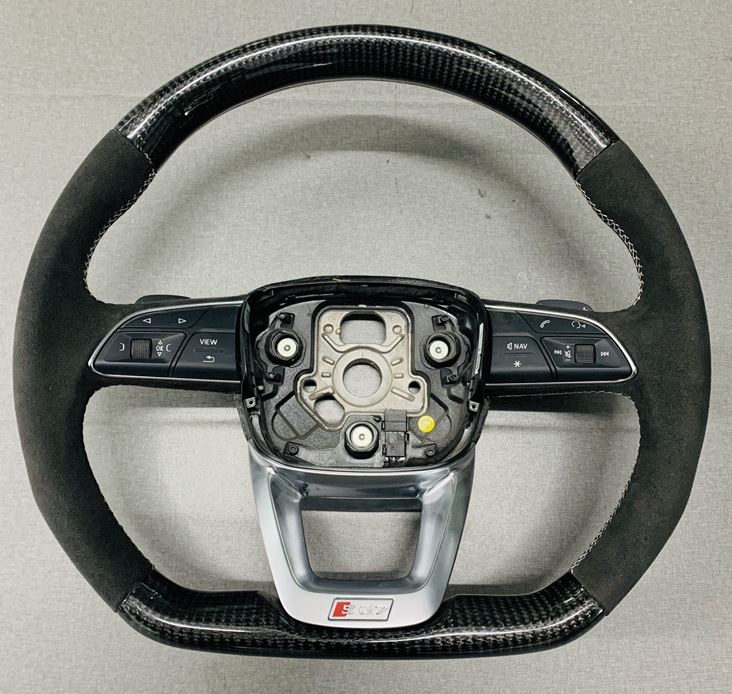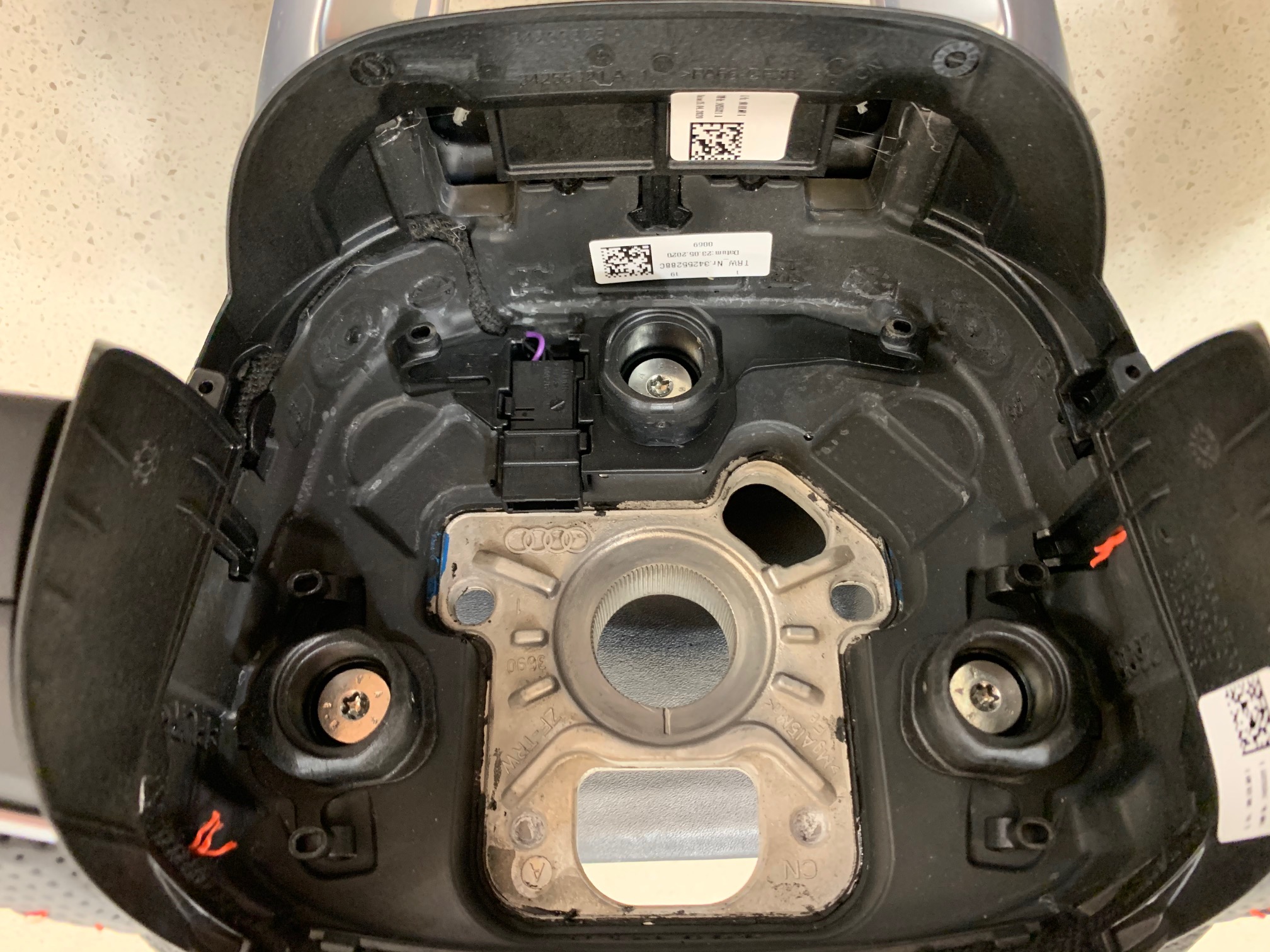A definitive guide to Carbon Fiber Steering Wheels. The very pinnacle of steering wheels involves the use of carbon fiber to wrap the finish in a layer of glossy lustrous carbon fibre weave, or forged carbon. This coupled with leather, contoured into shapes that will fit your hand ensures that the looks of a carbon fiber steering wheel make it stand out above any other standard steering wheel. Couple this with coloured stitching or Alcantara instead of plain old leather, and the option of led lights on the top to show RPM and shift indicators and it is easy to understand the allure of such aftermarket steering wheels. Yes, they are entirely aftermarket. Audi does not have a carbon fiber steering wheel that is made for the masses. Even the Audi R8 sports a more than conventional leather with aluminum trim steering wheel. Not all Carbon is made the same. Yes, there are differences even in carbon fiber wheels. Are they made on an OEM base, which is simply stripped of its leather, and bound in carbon fiber weave? Or is it an aftermarket base with customized grips and shapes. For the most part, many manufacturers start with an OEM base and then start the process of wrapping the carbon and leather into a product that is unmistakably a carbon recreation of classic Audi steering wheels. Others however would start with an aftermarket base cast in metal and then wrapped and contoured into shapes normally not attained in an OEM unit. What’s the difference? In all honesty, the main issue would boil down to the shearing strength of the steering wheel’s splines. If you look closely at the mating of the steering column and the steering wheel, you will notice that the steering wheel is precisely milled to produce fine splines that enable the two components to mesh securely together. In an OEM base, we are more or less assured that the tolerances and strength of the metal and splines are within the specifications set out by the manufacturer. The same however may not be true of aftermarket bases, as no one knows what the metallurgy of these bases are or the tolerances in milling the splines may be. The result may therefore be the cracking of splines during installation or everyday use, which may then lead to a loss of control due to the failure of the steering wheel to remain secure to the steering column.
So how do you tell the two apart? Look for the subtle differences in the casting processes of an OEM and an Aftermarket base. OEM units would generally have as part of their casting mold, the country of manufacture, the specific alloy used to cast the base, the Audi logo and several reinforcement spars. Aftermarket units would generally not carry any of these marking and would be a flat base.
So, before you go buy that fancy new carbon fiber steering wheel, make sure you understand the process of how these wheels are made, what to look out for and how to assess whether that carbon fiber unit is worth that large amount of money you are about to fork out. At Modhub, we carry a small amount of Carbon Fiber steering wheels for customers who love them and we ensure that all of them are made using OEM bases and are always true flat bottom steering wheels. You can buy assured with Modhub, as we do not cut corners and are passionate about what we do, and how we do it matters, to us, to you, and to our cars.






